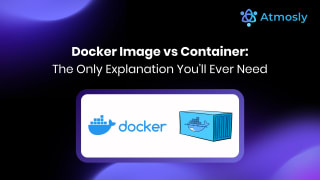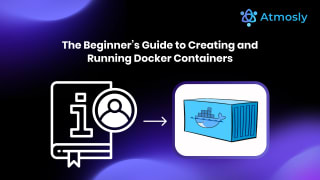Microservices are awesome they're like building blocks for flexible, fast-growing apps. But scaling them up can be tricky. Imagine your app as a bustling city, and each service is a different shop. Keeping track of everything and making sure it works smoothly gets tough as the city grows. Additionally, managing the configuration and dependencies of each application as it grows can become quite challenging over time. In this Blog we will understand in dept some of the solution that will help you scale Micro-service better.
Always remember : Clean code scales, messy code crumbles.
What is Microservices Architecture?
Microservices architecture is a design approach in software development in which an application is composed of small, independent services. Each service performs a specific function and communicates with other services through well-defined APIs. Unlike traditional monolithic architectures where the entire application is a single, indivisible unit, microservices are modular, allowing for easier scalability, development, and maintenance.

This architecture enables teams to deploy services independently, across multiple programming languages and platforms. Microservices are designed around business capabilities, with each service running its own process and managing its own database (or a common data layer). This separation of concerns enables agility, as changes to one service do not necessarily affect others, facilitating faster updates and innovation.
Importance of Scalability for Microservices in Modern Applications
Scalability is a critical aspect of microservices architecture, especially in the context of modern applications that must handle varying loads efficiently. Scalability ensures that an application can handle growth in terms of user base, data volume, or transaction rate smoothly, without compromising performance.
In microservices, scalability is not just about handling more requests; it's about doing so efficiently and cost-effectively. It allows for the dynamic allocation of resources to meet demand, whether that means scaling up (adding more resources) during peak times or scaling down during off-peak hours to save on costs.
Moreover, the distributed nature of microservices allows each service to be scaled independently, providing granular level of control over resource utilization. This is particularly important for modern applications, which may experience unpredictable bursts of traffic and need to maintain high performance and availability without over-provisioning resources.
Scalability in microservices also supports resilience. By designing services to scale horizontally, you can ensure that the failure of a single instance does not impact the overall availability of the service. This is essential for maintaining the reliability of critical applications that support business operations.
Understanding Elasticity in Microservices
What is Elasticity in the Context of Microservices?
Elasticity in the context of microservices refers to the ability of an application's ability to automatically adjust and allocate computational resources in response to current demand, without human intervention. It's about the system's ability to handle increases or decreases in workload by dynamically adding or removing resources to maintain optimal performance. In microservice architectures, elasticity is crucial, enabling each service to scale in or out independently based on its specific load, ensuring the application as a whole maintains high availability and performance under varying conditions.
Differences Between Elasticity and Scalability
While often used interchangeably, elasticity and scalability are distinct concepts, especially relevant in the context of microservices. Scalability is the capability of a system to handle a growing amount of work by adding resources to the system. In microservices, this can mean adding more service instances to handle increased load. Scalability can be proactive, requiring planning and manual intervention to scale the system in anticipation of demand.
Elasticity, on the other hand, is a subset of scalability that focuses on the system's ability to automatically manage resource allocation in real-time, responding to actual demand fluctuations. Elastic systems can scale out (add resources) or scale in (remove resources) automatically, ensuring they use just the right amount of resources at any given time. This dynamic adjustment is crucial for cloud-native applications and microservices, where workload patterns can be unpredictable and efficient resource utilization can significantly impact costs and performance.
Challenges of Scaling Microservices
Complexity of Inter-Service Communication
As microservices architectures decompose applications into smaller, independently scalable services, the complexity of inter-service communication increases significantly. Each service needs to communicate with others, often over a network, to perform its functions. This setup introduces latency, network failures, and complexity in handling request formats, protocols, and error handling. Ensuring robust, efficient communication while maintaining loose coupling requires sophisticated strategies, such as implementing API gateways, using asynchronous messaging systems, and adopting service-mesh technologies to manage service-to-service communication.
Service Discovery and Load Balancing Challenges
In a dynamic environment where microservices can be scaled up or down, moved, or redeployed, keeping track of the location (IP address and port) of each service instance becomes challenging. Service discovery mechanisms are essential for microservices to locate and communicate with each other. However, implementing and maintaining a reliable service discovery mechanism that can handle frequent changes in the service landscape is non-trivial.
Similarly, load balancing across multiple instances of a service is crucial for evenly distributing client requests and preventing any single instance from becoming a bottleneck. Traditional load balancers may not be nimble enough to adapt to rapidly changing addresses of service instance addresses, necessitating more dynamic, software-defined load-balancing solutions.
Data Consistency and Transaction Management in Distributed Systems
Maintaining data consistency across distributed microservices while ensuring high availability and performance is a significant challenge. Distributed transactions, which were straightforward in monolithic architectures, become complex in microservices due to the need to coordinate actions across multiple, independently managed databases. Implementing patterns like Saga or Two-Phase Commit, or adopting Eventual Consistency, can help, but each comes with trade-offs among consistency, availability, and complexity.
Monitoring and Managing Multiple Service Instances
With potentially dozens or hundreds of microservices running in production, monitoring their performance, health, and interactions can be daunting. Traditional monitoring tools may not provide the granularity or the dynamic scalability needed for microservices architectures. Implementing a comprehensive observability strategy that includes logging, metric collection, and distributed tracing is essential for gaining visibility into the system's state and behavior. Additionally, managing the lifecycle of multiple service instances across different environments requires robust automation and orchestration tools to deploy, scale, and maintain services efficiently.
Strategies for Elasticity

Auto-Scaling: Automatically Adjusting the Number of Service Instances Based on Load
Auto-scaling is a fundamental strategy for achieving elasticity in microservices. It involves automatically adjusting the number of instances of a microservice in response to its current demand. This ensures that the application can handle load spikes without manual intervention, improving resource utilization and maintaining performance levels.
- Horizontal vs. Vertical Scaling: Horizontal scaling adds more instances of a service to distribute load, while vertical scaling adds resources (such as CPU or memory) to an existing instance. Horizontal scaling is generally preferred in microservices due to its flexibility and the distributed nature of microservices architectures. Vertical scaling, though simpler, has limits due to the capacity of a single machine.
- Predictive Scaling Based on Traffic Predictions: Beyond reactive scaling in response to current demand, predictive scaling analyzes historical load patterns to anticipate future demand spikes. By scaling out in advance of expected load increases, applications can prevent performance degradation and ensure that they meet demand without delay.
Rate Limiting and Throttling: Managing the Load on Services to Prevent Overload
Rate limiting and throttling are techniques used to control the amount of incoming requests a service can handle over a specific period. These methods prevent services from being overwhelmed by too many requests, which could lead to failures and degraded performance. Implementing rate limiting can also protect against abusive or misconfigured clients and help ensure fair resource use across all consumers.
Caching: Reducing the Load on Services and Improving Response Times
Caching is a powerful strategy for enhancing the performance and scalability of microservices by temporarily storing copies of frequently accessed data or computation results. By serving cached responses for common requests, services can significantly reduce their workload, decrease response times, and reduce dependencies on downstream services or databases. Effective caching requires careful management to ensure data consistency and to invalidate the cache when the underlying data changes.
Together, these strategies form a comprehensive approach to managing elasticity in microservices architectures, enabling applications to dynamically adapt to changing demands while maintaining high performance and efficient resource use.
Performance Optimization Techniques
Database Sharding and Replication: Improving Database Performance and Availability
Database sharding involves dividing a database into smaller, faster, more easily managed parts called shards. Each shard is held on a separate database server instance, spreading the load and reducing the response time for database queries. This approach can significantly improve the performance and scalability of applications that rely on large databases.
Replication, on the other hand, involves creating copies of a database, allowing read operations to be distributed across multiple replicas. This not only improves read performance but also enhances the availability and fault tolerance of the system, as clients can switch to a replica if the primary database fails.
Load Balancing Strategies: Evenly Distributing Traffic Among Service Instances
Effective load balancing is crucial for distributing incoming network traffic across multiple servers or instances of a service. This ensures that no single server bears too much load, preventing potential bottlenecks and improving the responsiveness of the application. Strategies include round-robin, least connections, and IP hash, each with its advantages depending on the specific requirements of the application. Implementing a smart load balancing strategy can optimize resource use and ensure a smooth user experience.
Service Mesh Implementation: Simplifying Service-to-Service Communication and Improving Performance
A service mesh is an infrastructure layer that facilitates service-to-service communication in a microservices architecture, providing a way to control how different parts of an application share data with one another. It offers features like service discovery, load balancing, encryption, and observability, all without changing the application code. By handling interservice communications, a service mesh improves the performance and reliability of microservices applications, making it easier to manage complex interactions and dependencies.
API Gateway Patterns: Managing APIs for Microservices Efficiently
An API gateway acts as a single entry point for all client requests to the microservices in the backend. It provides essential functions such as request routing, composition, and protocol translation, enabling clients to access various services with a single request. Moreover, API gateways can handle cross-cutting concerns like authentication, SSL termination, and rate limiting, thereby offloading these tasks from individual microservices and optimizing overall performance.
Application Performance Management (APM): Monitoring and managing the performance
APM helps identify bottlenecks, understand microservice dependencies, and optimize the overall user experience by providing real-time analytics, performance data, and actionable insights. This integration ensures applications run at peak efficiency, aligning with the goals of scalability, reliability, and superior performance in microservices architectures.
Tools and Technologies for Scaling Microservices
Container Orchestration Platforms
- Kubernetes: An open-source platform designed to automate deploying, scaling, and operating application containers. It groups application containers into logical units for easy management and discovery. Kubernetes is widely adopted for its powerful ecosystem, scalability, and robust community support.
- Docker Swarm: Docker's native clustering tool, Swarm, allows you to turn a group of Docker hosts into a single, virtual Docker host. It's known for its simplicity and ease of use, making it a good choice for smaller deployments or those deeply integrated with Docker tools.
Service Mesh Technologies
- Istio: An open-source service mesh that provides a way to control how microservices share data. Istio offers advanced traffic management, security, and observability features without requiring changes to microservice code. It's designed for complexity management, offering fine-grained control over traffic and network policies.
- Linkerd: A lightweight service mesh, designed to give you observability, reliability, and security without requiring configuration. It's known for its simplicity and low resource usage, making it suitable for applications that need a service mesh without the overhead of more complex systems.
Monitoring and Observability Tools
- Prometheus: An open-source monitoring solution that offers powerful data collection, querying, and alerting capabilities. It's designed for reliability and scalability, handling multi-dimensional data collected from microservices environments very efficiently.
- Grafana: A popular open-source analytics and monitoring solution that can integrate with a wide range of data sources, including Prometheus. Grafana is used for visualizing metrics, creating dashboards, and setting up alerts to monitor the health of microservices applications.
- Jaeger: An open-source, end-to-end distributed tracing system that helps you monitor and troubleshoot transactions in complex distributed systems (like those built using microservices architecture). It's particularly useful for understanding the behavior of microservices and their interactions.
Cloud Services and Solutions for Microservices
AWS ECS (Elastic Container Service): A highly scalable, high-performance container management service that supports Docker containers and allows you to easily run applications on a managed cluster of Amazon EC2 instances. ECS simplifies microservices management, allowing you to focus on building your application instead of managing the underlying infrastructure.
Azure Service Fabric: A distributed systems platform that makes it easy to package, deploy, and manage scalable and reliable microservices and containers. Service Fabric also supports a comprehensive programming model for developing microservices, offering both stateless and stateful options.
Managing Application Configuration Tools
CI/CD Pipelines
- Jenkins: An open-source automation server that enables developers to build, test, and deploy their applications efficiently. Jenkins supports various plugins for continuous integration and continuous delivery.
- GitLab CI: Integrated with GitLab, it provides a streamlined workflow for continuous integration and delivery, enabling automated pipelines in your Git repository.
- Argo CD: GitOps-based continuous delivery tool, managing deployments through Git repositories, ensuring declarative state and easy configuration management. (Focuses on GitOps approach and state management)
Helm
Helm is a powerful tool designed for Kubernetes, which simplifies the process of managing applications. It uses Helm charts to define, install, and upgrade even the most complex Kubernetes applications. Helm charts package all the necessary components of a Kubernetes application into a single package, streamlining the deployment and management process. This makes Helm an indispensable tool for developers and operations teams looking to maintain consistent, reproducible application deployments across various environments.
Best Practices for Scaling Microservices
Designing for Failure: Implementing Fallbacks and Circuit Breakers
One of the key principles in building resilient microservices is to design with the expectation of failure. Implementing patterns like fallbacks and circuit breakers can help prevent a single service failure from cascading and affecting the entire system. Fallbacks allow the system to provide a default response when a service is unavailable, while circuit breakers prevent a service from being overwhelmed by cutting off requests during failure states, allowing it to recover.
Continuous Performance Testing and Benchmarking
To ensure that microservices can handle real-world loads and perform optimally under various conditions, continuous performance testing and benchmarking are essential. This involves regularly testing the system with simulated traffic and workloads to identify bottlenecks and performance issues. By integrating performance testing into the CI/CD pipeline, teams can catch and address issues early, ensuring that the system remains scalable and responsive.
Adopting Infrastructure as Code (IaC) for Repeatable and Scalable Deployments
Infrastructure as Code (IaC) is a practice that involves managing and provisioning infrastructure through code instead of manual processes. By defining infrastructure using configuration files, teams can automate the deployment and scaling of microservices, ensuring consistency and repeatability. IaC enables scalable deployments across environments and simplifies the management of complex microservice architectures.
Ensuring Security at Scale
As microservices architectures grow, managing security at scale becomes increasingly complex. Adopting a comprehensive security strategy that includes automated vulnerability scanning, implementing secure communication protocols (like TLS for service-to-service communication), and applying the principle of least privilege for service access can help safeguard the system. Additionally, regular security assessments and embracing a DevSecOps culture ensure that security considerations are integrated throughout the development lifecycle, not just as an afterthought.
Conclusion
Scaling microservices effectively requires more than just adding servers it demands intelligent orchestration, elasticity, and observability. By leveraging strategies like auto-scaling, caching, service mesh implementation, and continuous performance monitoring, teams can ensure high-performing, resilient systems.
Platforms like Atmosly take this a step further providing end-to-end automation for Kubernetes-based microservices. From Day-0 scalability to real-time performance insights, Atmosly empowers DevOps teams to manage complex architectures effortlessly while optimizing cost and reliability.
Start scaling smarter with Atmosly simplify microservices growth, boost performance, and ensure stability at every stage of your cloud journey.






